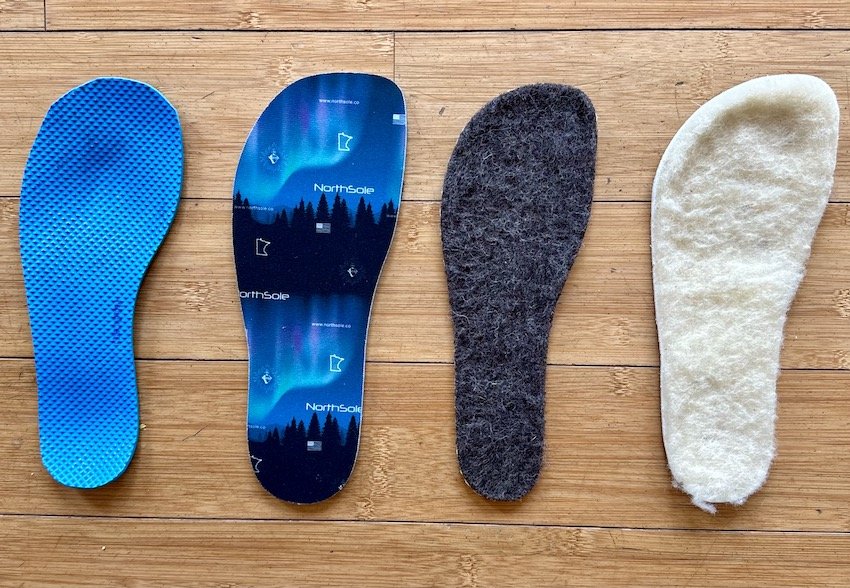
I’ve been wearing barefoot shoes for several years now, and I love using barefoot-friendly insoles in them! They are a low cost way to increase the versatility of your shoes and help bridge the gap between conventional shoes and barefoot shoes.
You see, when it comes to barefoot shoes it doesn’t have to be all-or-nothing. I have a long history of foot pain and it took me a while to get used to the thin, flexible soles on barefoot shoes – insoles have saved me on more than one occasion! Today I use them on a regular basis for a variety of different purposes. Here is how.
What Kind Of Insoles Can I Wear With Barefoot Shoes?
To clarify, insoles does not equal orthotics or support. An insole is simply an additional layer of material you can add to the inside of your shoe. Because barefoot shoes have uniquely flexible outsoles, you want to find insoles that are also flexible so they move with the shoe. In this article we are covering the best insole options that work with minimalist shoes to provide additional comfort, functionality, and in some cases mild support.
A note about orthotics: Orthotics, such as these, can be a short term therapeutic tool if you are recovering from an injury (see my thoughts on arch support here).
But specifically when it comes to barefoot shoes, you want to make sure the orthotic is stable inside the shoe before wearing – the flexible outsoles of barefoot shoes might not keep a rigid insert stable and that can stress the joints in and above your foot. So if you are someone who needs a rigid orthotic I suggest pairing it with one of the thicker, more cushioned options from this list, or at least making sure that the orthotic is stable inside your shoes.
Now let’s get to the insoles I love to use in barefoot shoes!
Insoles for Comfort
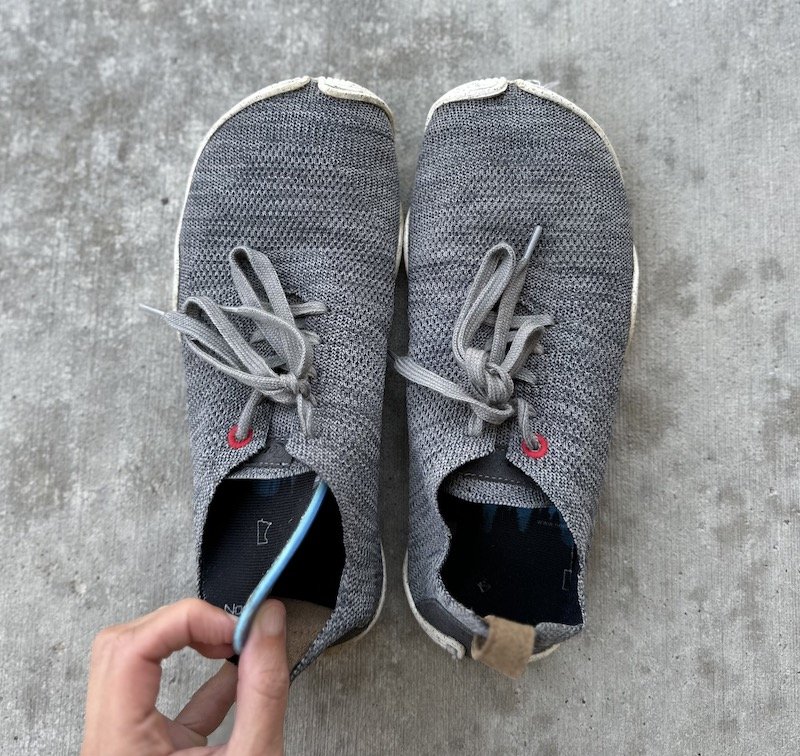
My two favorite insoles for comfort in barefoot shoes are:
- NorthSole – flat, flexible, long lasting
- Bridge Soles – mild arch support and heel lift to aid your transition to zero drop shoes
- Metatarsal Pads – while not a full insole, these provide light support and cushioning under the transverse arch.
NorthSole insoles are completely flat and flexible, they just add cushion. But let me tell you, they can really change things around for you if you are feeling like barefoot shoes are too thin.
Bridge soles on the other hand have mild support and a small heel lift that breaks down over several months as you wear them. I recommend Bridge Soles specifically for people who are transitioning away from supportive footwear, whereas NorthSole insoles can be used forever no matter how functional your feet are.
And finally, metatarsal pads are a useful tool if you have some discomfort in barefoot shoes but don’t want to go to a rigid orthotic. They have alleviate pressure on the ball of the foot and help your metatarsals align naturally. Because they aren’t a full insole, you use it by sticking it on another insole.
Some people, no matter how long they’ve been wearing barefoot shoes, will always want cushion because of their particular anatomy or the environment they walk/stand in. There is absolutely nothing wrong with this. I still use my NorthSole insoles on long travel days or if I’m having a bad joint day! You feet will reap the benefits of your flexible, spacious shoes and they will continue to strengthen even if you have a little more cushion underneath.
Insoles for Warmth & Sock Replacement
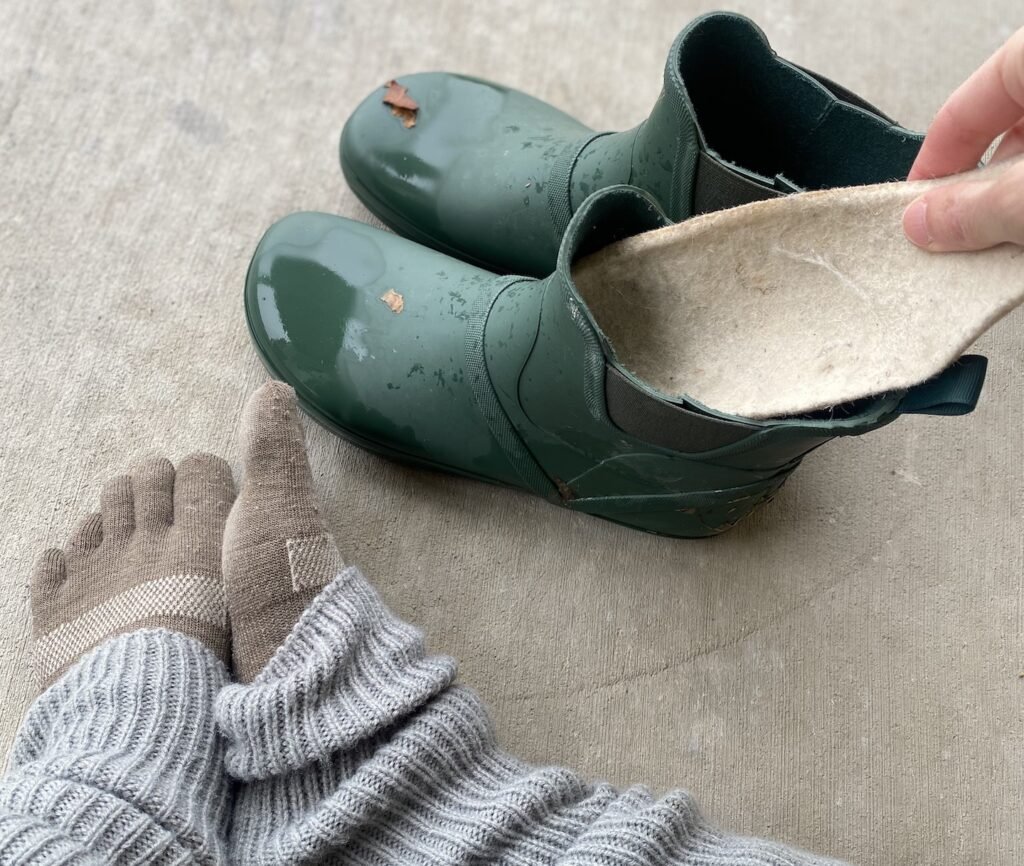
My favorite insoles for warmth and to replace socks are:
- Peerko Wool Insoles
- Wildlings Wool insoles (Felty is extra thick and warm, Woolly is thinner but still warm). Code AWN_ANYA_S can be used for a one-time free shipping offer. If you are outside the US/Canada, use this Wildling Shoes link.
- DIY Felt Insoles
- Softstar Sheepskin
- Amazon Sheepskin
- Vivobarefoot Thermal Insoles (a vegan friendly option, but I don’t find them very insulating)
- Many brands sell warm insoles separately, so when shopping for boots check to see if you can easily add them to your order!
Barefoot shoes are thin. You can talk about your fancy insulating thermal insoles all you want but if you’re feet are sitting on frozen ground, they gonna get cold. Any insole that adds height will keep your feet warmer, but my favorite for warmth are wool and sheepskin insoles. Because we live in a cold climate, we almost always use extra insoles in our barefoot winter boots!
The main thing to think about is how much space they will take up in your shoes. Because warm insoles tend to be thick I often size up in the barefoot boots that I plan to wear them with. If you are looking for a more versatile option, I would recommend Wildling’s Woolly insoles because they are thinner and much easier to fit into shoes.
But the amazing thing about wool and sheepskin is they are not just warm – they are temperature regulating AND absorbent. So if you are someone who really doesn’t like socks, you can use these insoles instead and your shoes won’t get funky. You can also explore socks that don’t squish your toes!
I have also listed Vivobarefoot’s thermal insoles as a vegan option, but I have to be honest. I really don’t find them very warm (and they don’t absorb sweat). They will be better than nothing, but if you are facing serious winter conditions I would recommend something warmer.
Insoles for Performance
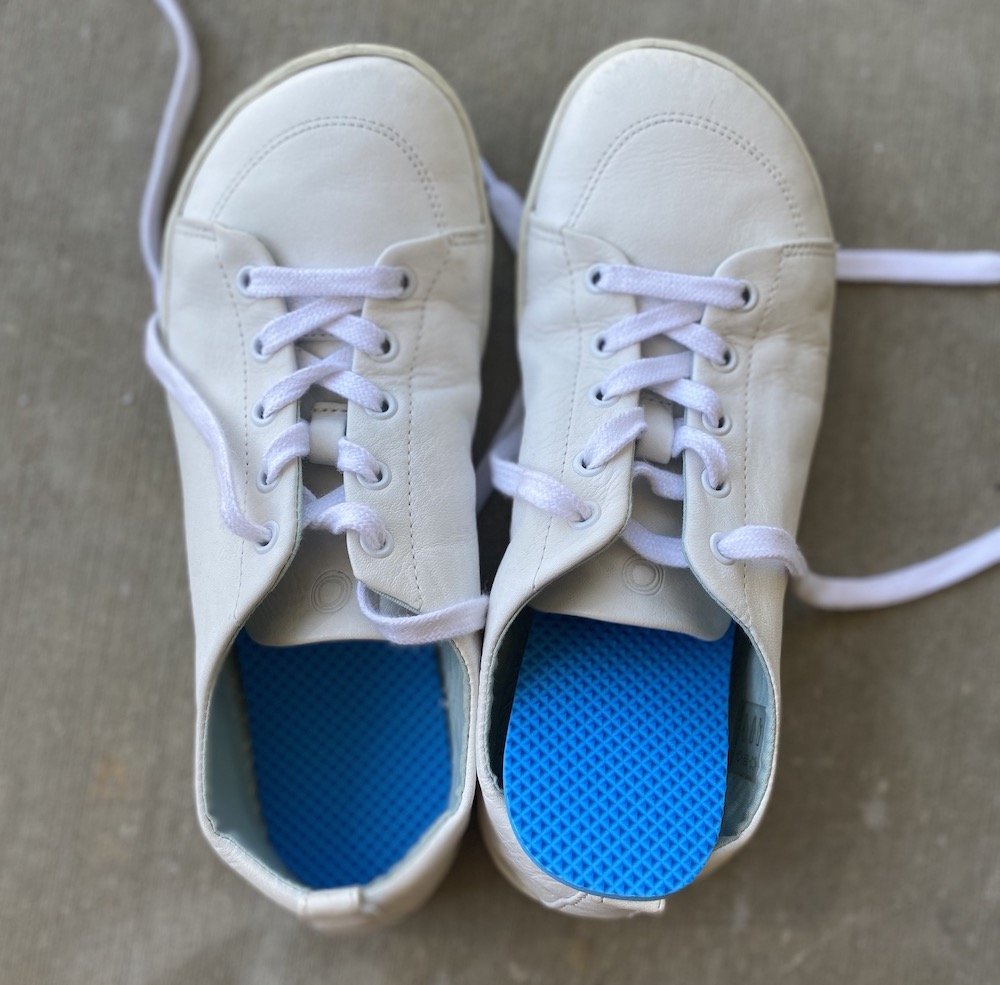
Performance insoles, like from Naboso Technology, use nerve stimulation to improve your gait and posture. Movement originates in the nervous system, so getting the nerves firing through your feet and legs makes it easier to move optimally.
I have been wearing Naboso insoles for several years now, and when I wear them my legs feel more stable and alive. Naboso insoles come with different amounts of stimulation depending on how comfortable you are with texture on your feet.
I am wearing the Activation insoles. They can feel a little rough/overstimulating at first if you aren’t used a lot of feedback on your feet, but over time I have really grown to love it. You can even get a Xero sandal with a Naboso insole on it which is very intriguing to me!
You can use code ANYASREVIEWS10 for 10% off the Naboso e-shop.
Insoles for Shoe Fit
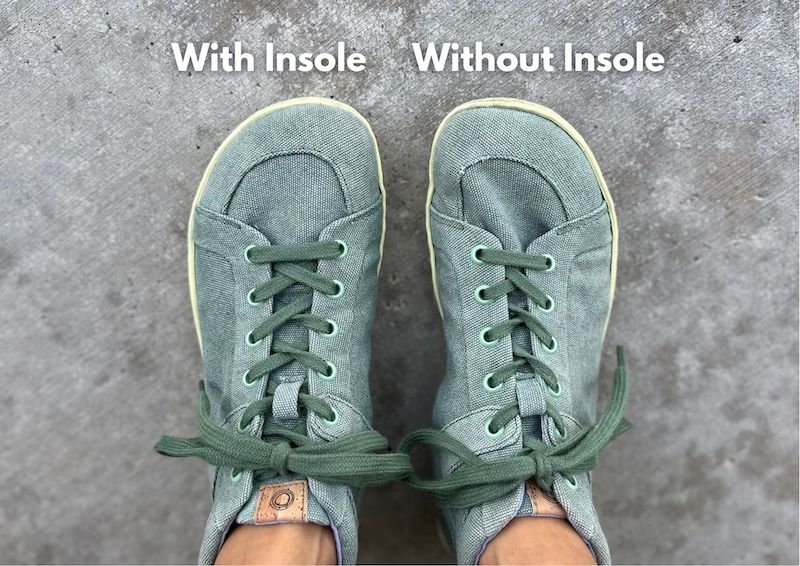
Insoles can also be really helpful in barefoot shoes that are too high volume for your foot. I have low volume feet, so I frequently add a thin insole to keep my foot from sliding around inside the shoe. I can’t tell you how many shoes have been saved using this trick!
Another shoe fit hack: Sometimes insoles don’t fit well in my shoes, so in this case I ditch them and put a felt sticky or moleskin in the shoe upper. Sometimes I use both.
Insoles for Sandals & Flats

Since most of the insoles above don’t work well in open cut shoes, I’ve found some special options that can add some cushion to your sandals and flats! Like other insoles, these can also be used to improve the fit if your shoes are too floppy.
- Foot Petals Cushion – 3mm thick and my favorite for this purpose.
- Adhesive Shoe Liner – intended to absorb sweat and make the inside of your shoes non-slip. They are 1mm thick but come in a 3 pack so you can stack them for more cushion.
- Flat socks – 5mm thick, which be difficult to find into shoes without sizing up. I also recommend buying the largest Flat Sock size and then cutting it down to the right shape.
How Many Pairs of Insoles do I Need?
The convenient thing about insoles is that their purpose can double up. You can make shoes fit better, get more comfort, and extra warmth! I’ve found that a few insoles on hand makes it possible to get by with fewer pairs of shoes, and they can easily be moved around to whatever you are wearing that day! So don’t feel like you need an extra insole for every shoe you own.
Another fun fact is that many barefoot shoes come with removable insoles that you can mix and match with other shoes.
Like barefoot shoes? Make sure check out all the reviews and shoe lists I have here!
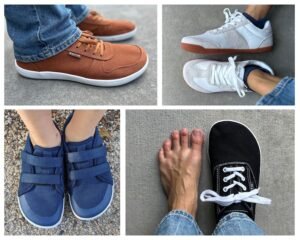
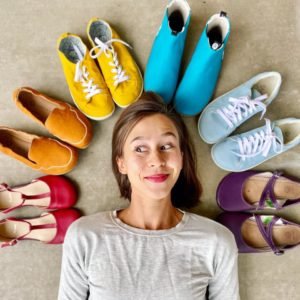

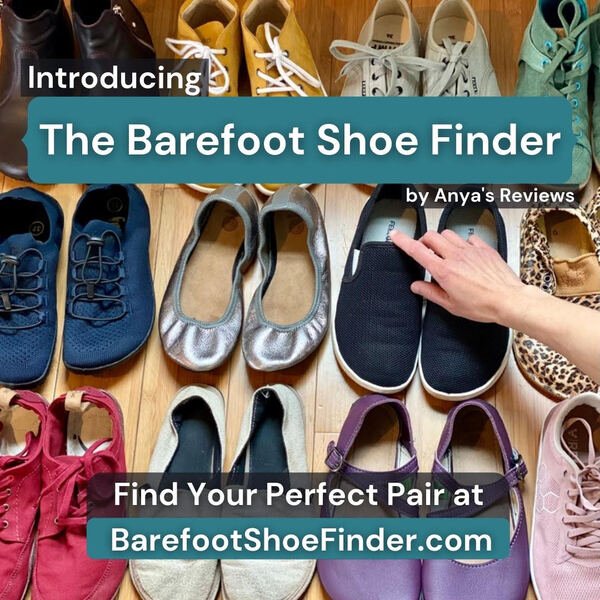
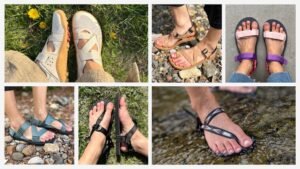
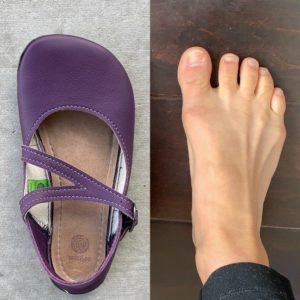

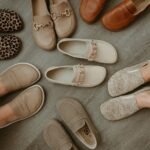
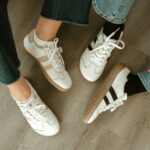




85 thoughts on “The Best Insoles To Wear With Barefoot Shoes”
You might be interested to check out buffalo/wool insoles, here: https://thebuffalowoolco.com/products/bison-wool-insoles?variant=31824039673967
I used them in a pair of sheepskin slippers. They do felt up a little with use but I was happy with how long they lasted.
Thank you for sharing! Those look delightfully warm.
Exploring insole use–those bison wool felt insoles are precut and are extremely narrow for use in a wider shoe. But I have and want to use them. If I put them in my Joe Nimble boots on top of the existing insole, the edges are noticeable. Thoughts on whether putting them underneath would still offer me more warmth?
I just swapped out that link for a cut your own option that I’ve been referring people to instead, thanks for the heads up! It would help with the warmth for sure, it’ll insulate the whole shoe and put a little more distance between you and the ground. Maybe not quite as cozy as having it next to your skin, but it’ll help.
Thanks. I bought the sheet of wool felt available on Amazon, I believe you had a link to it. The thickness of that is the same as the pre-cut bison insoles I have. The bison ones feel denser.
I used the bison felt ones in a pair of sheepskin slippers. Periodically I’d need to remove pieces of super-felted material from the insoles, until they eventually wore through. That’s normal–that’s how felt’s created in the first place, from heat and friction applied to the natural fiber.
Thank you for your feedback!
Thank you for your recommendations! I’m transitioning to barefoot/minimalist shoes because of 2+ years with plantar fasciitis and other foot problems. I’m pleased that I’m walking about 4-5 daily without orthotics in barefoot shoes. But when I stop or stand for a while, I notice in a few minutes that some extra cushion would be nice! Also, I’d like to start running again, and I just can’t imagine running right now without a little more cushion. Have you done any running in any of these? If so, which would you recommend?
Definitely NorthSole! I also have a list of running shoes organized by sole thickness that might be helpful.
https://anyasreviews.com/zero-drop-barefoot-running-shoes/
I know you’ve mentioned it, but can’t remember where… what do you use when the back of the shoe runs on your foot? Can you link what you use for that? I have a pair of Mukishoes that I love, but they run the skin above my heel and irritate it. Thanks!
I think you’re talking about heel grips! I have these ones from Foot Petals: https://amzn.to/3fYRv6x
But next time I’m going to get a packs of the cheaper ones on Amazon (because the Foot Petals are a racket IMO!).
would you get the fully waterproof Tracker II or the natural waterproof but not total waterproof – Tracker Forest?
If it rains hard I want my feet to stay dry but some people say that waterproof boots make their feet sweat. Not sure if the Tracker II would make your feet sweat.
Or would you get the Tracker Forest and wear waterproof socks if it is really wet?
The Tracker Forest just came out this summer and I haven’t had any opportunity to wear them in really wet conditions. But they come with a waterproofing sealant you can use on the leather. My gut is to say that unless you’re going to be standing in puddles for a long time they probably will stay dry. The Tracker FG I only wear in cold weather, so the sweating has never been a problem for me. But it’s something I hear from others who want to wear them in warm conditions. If I could only have one pair I would probably choose the Forest.
Hi Anya!
With the Softstar insole, do you get the regular ones or the primally shaped ones for your winter boots?
thank you!
At the time they didn’t have the primal shaped ones! So I just got regular.
Hi! I’m just trying my first pare of barefoot shoes from Vivobarefoot. I think I have a low volume foot and I wear a half size. I ordered up a half size, but without the insoles, the shoe is a bit big for me. Do you personally recommend sizing down or sticking with what I have and using insoles/other tricks to try to make it more comfortable?
My one foot is slightly larger, so I’m a little worried that the size down may make my toe space crammed. I’m new to barefoot shoes, though, so I’m not used to them being so roomy!
If the shoe fits well with the insole then I say stick with it. It can feel odd to have so much toe space, but if you’re comfortable and nothing is sliding or flopping then you should be good.
Hi there, would you order primal or regular soft star Insoles for the vivo barefoot tracker? I’m not sure which shape will suit that shoe best. What would you choose now?
My guess is the regular insoles would be fine, but you can always cut them to fit.
Thank you for this blog, really useful. Do you know if I can get hold of Northsoles in the UK? Thanks
Last I heard NorthSole ships worldwide!
Hi, I am on the hunt for some thin (but durable) insoles to put in my altra lone peaks. I wear them for everything (trail running, backpacking, construction, bushwacking, etc) but find I have to take the insoles out so they aren’t too squishy (and I hate arch support). However, I have found that on long runs or extended backpacking trips I get blisters on the bottom of my feet and I have a hunch it’s because the inside of the shoe without the insole is kind of sticky. Any suggestions?
Hmmmm, not sure actually. You could try a thin cotton with duct tape on the underside (the sticky side on the insole, smooth side touching the inside of the shoe). Supposedly that keeps them from sliding around. You could also swap an insole from another barefoot shoe, like from Vivo. Or just order Vivo insoles separately. They’re pretty thin and not very squishy.
I just use regular, thick wool felt. Bought some at a fabric warehouse, cut it to fit and sewed two pieces together to get the extra thickness I wanted. Replaced the squishy, too high-arches, in my Olukai Moloa slippers, and has worked perfectly. They can pill a little, but I’m also wearing them barefoot cuz they’re slippers. I haven’t tried to run in them (a fair bit of dancing around the house though)!
The thicker the better for the felt I think. I found some that’s close to 1/8″, maybe 3/32″ thick and doubled it. With that thickness it doesn’t move around or bunch up.